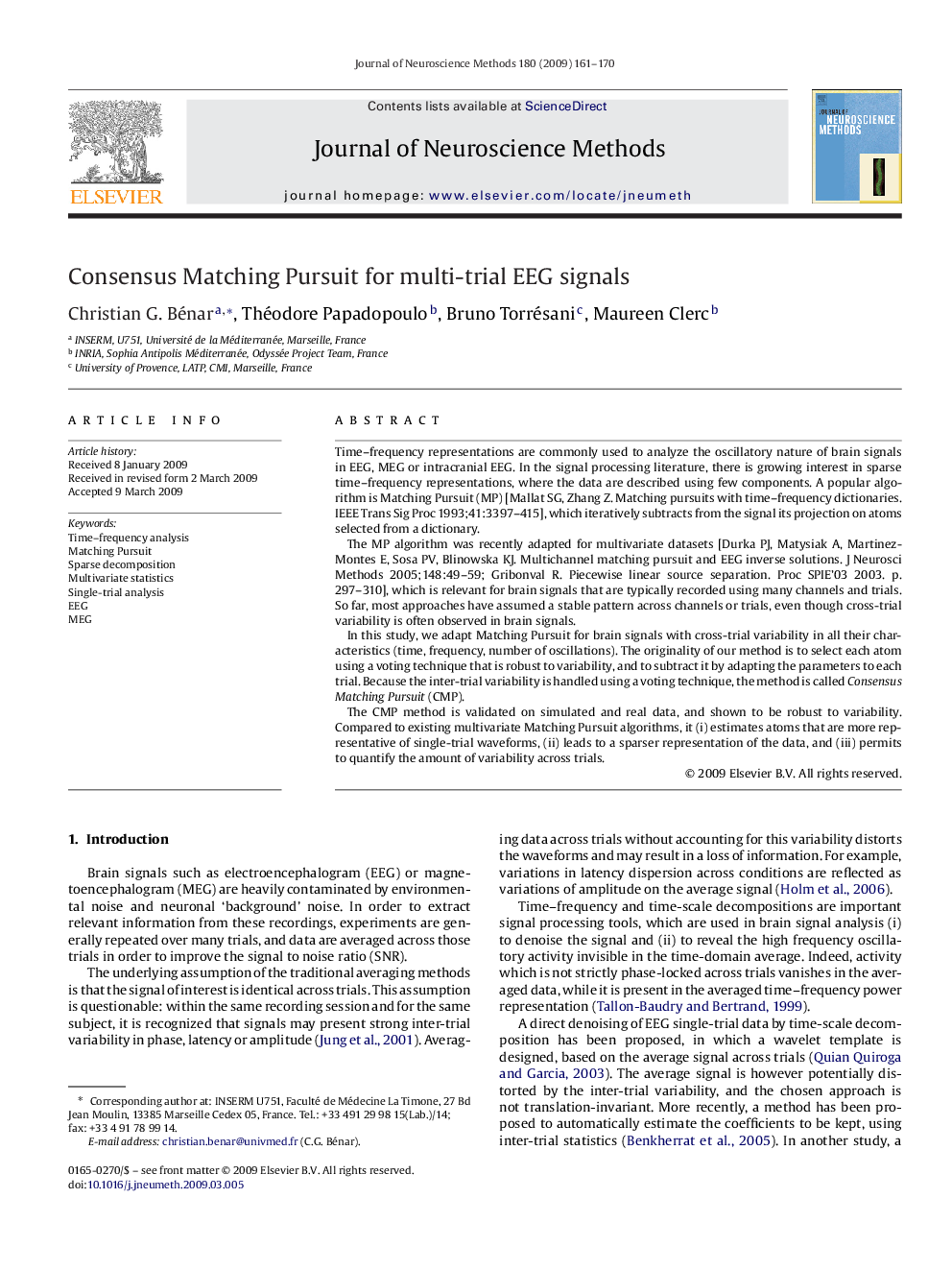| کد مقاله | کد نشریه | سال انتشار | مقاله انگلیسی | نسخه تمام متن |
|---|---|---|---|---|
| 4336167 | 1295197 | 2009 | 10 صفحه PDF | دانلود رایگان |

Time–frequency representations are commonly used to analyze the oscillatory nature of brain signals in EEG, MEG or intracranial EEG. In the signal processing literature, there is growing interest in sparse time–frequency representations, where the data are described using few components. A popular algorithm is Matching Pursuit (MP) [Mallat SG, Zhang Z. Matching pursuits with time–frequency dictionaries. IEEE Trans Sig Proc 1993;41:3397–415], which iteratively subtracts from the signal its projection on atoms selected from a dictionary.The MP algorithm was recently adapted for multivariate datasets [Durka PJ, Matysiak A, Martinez-Montes E, Sosa PV, Blinowska KJ. Multichannel matching pursuit and EEG inverse solutions. J Neurosci Methods 2005;148:49–59; Gribonval R. Piecewise linear source separation. Proc SPIE’03 2003. p. 297–310], which is relevant for brain signals that are typically recorded using many channels and trials. So far, most approaches have assumed a stable pattern across channels or trials, even though cross-trial variability is often observed in brain signals.In this study, we adapt Matching Pursuit for brain signals with cross-trial variability in all their characteristics (time, frequency, number of oscillations). The originality of our method is to select each atom using a voting technique that is robust to variability, and to subtract it by adapting the parameters to each trial. Because the inter-trial variability is handled using a voting technique, the method is called Consensus Matching Pursuit (CMP).The CMP method is validated on simulated and real data, and shown to be robust to variability. Compared to existing multivariate Matching Pursuit algorithms, it (i) estimates atoms that are more representative of single-trial waveforms, (ii) leads to a sparser representation of the data, and (iii) permits to quantify the amount of variability across trials.
Journal: Journal of Neuroscience Methods - Volume 180, Issue 1, 30 May 2009, Pages 161–170